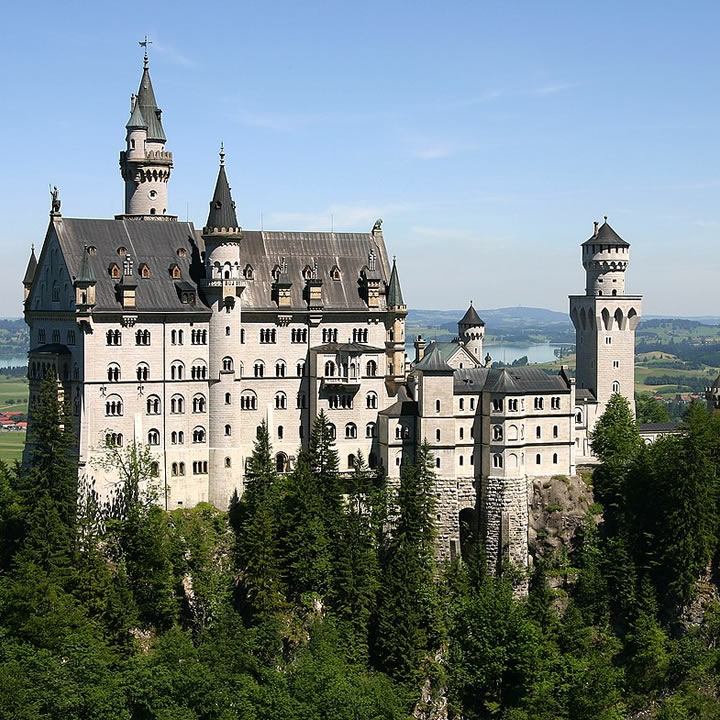Neuschwanstein Castle is one of the world’s top well-known castles. The fortress appears to upward thrust out of a rock in the forest region of Bavaria in Germany. With its many towers and towers, Neuschwanstein resembles a medieval fortress from a fairy tale. This palace is a unique notion for Walt Disney’s castles.
Neuschwanstein Castle is a fairy story palace surrounded with the aid of lovely scenery. Neuschwanstein and various European castles inspired the Sleeping Princess Castle at Disneyland in Anaheim, California. Let’s discover the records of this magical fortress and begin our Neuschwanstein Castle Tour.
History
Neuschwanstein Castle became the dream of King Ludwig II of Bavaria. Ludwig was interested in the operas of the German composer Richard Wagner on the birthdays of the legendary German gods and mythical heroes. Ludwig discussed the fort with the architect Edward Riedel and with the help of Christian Jank, a theatre designer.
The form depicts all the Gothic and Romanesque elements of the Middle Ages. Four hundred to 1400. Neuschwanstein is built of grey granite. The castle’s construction began in 1869 and ended in 1886 when the king died. The fortress became by no means finished.
In his romantic imagination and prescient of Neuschwanstein Castle, Ludwig became strongly stimulated with using Wartburg Castle, a medieval citadel in Germany. The Wartburg was the setting for Wagner’s opera Tannhäuser (1845).

Neuschwanstein’s improved putting offers traffic a wide-ranging view of the encompassing barren region. It enabled the fortress to become one of Germany’s top famous traveller attractions. The interior of the fortress demonstrates Ludwig’s passion for the Middle Ages. Artists painted the partitions of many rooms and corridors with scenes from German myths and legends. Marble, gilded boards, and tapestries adorn the various rooms.
The studio has murals depicting Tannhäuser scenes. Ludwig’s bedroom is ruled with the aid of using a large Gothic-fashion mattress decorated with difficult carvings. The throne room, which lacks a throne, resembles an inner church and includes a giant mosaic floor and a chandelier that resembles a large crown.
The Singers’ Hall has an elaborately decorated ceiling and many wonderful chandeliers and chandeliers. However, Louis II became more effective after staying in his fortress for 172 days. At his loss of life in 1886, the “new citadel” became no longer but complete.
However, the preserve commenced on and became left unfinished; the “ladies’ quarters” at the southern facet of the higher courtyard had been finished in easy shape with the aid of using 1891.
Information
Located on a dramatic hill above the village of Hohenschwangau, around eighty miles, or one hundred thirty km, from Munich town centre, Neuschwanstein makes for a good day experience from Munich. As nicely as its incredible architecture, you may be captivated with the aid of using its breathtaking perspectives over the encompassing Bavarian mountain scenery.
Public delivery is extra economical, at around € 32 (US$ 37.90). However, it is loads slower. You’ll take the travel guide from Munich Hauptbahnhof to Füssen, and from there take the seventy-eight number bus to Schwangau, getting off at Hohenschwangau Neuschwanstein Castles. It’s then a 25-minute stroll as much as the fortress itself.

